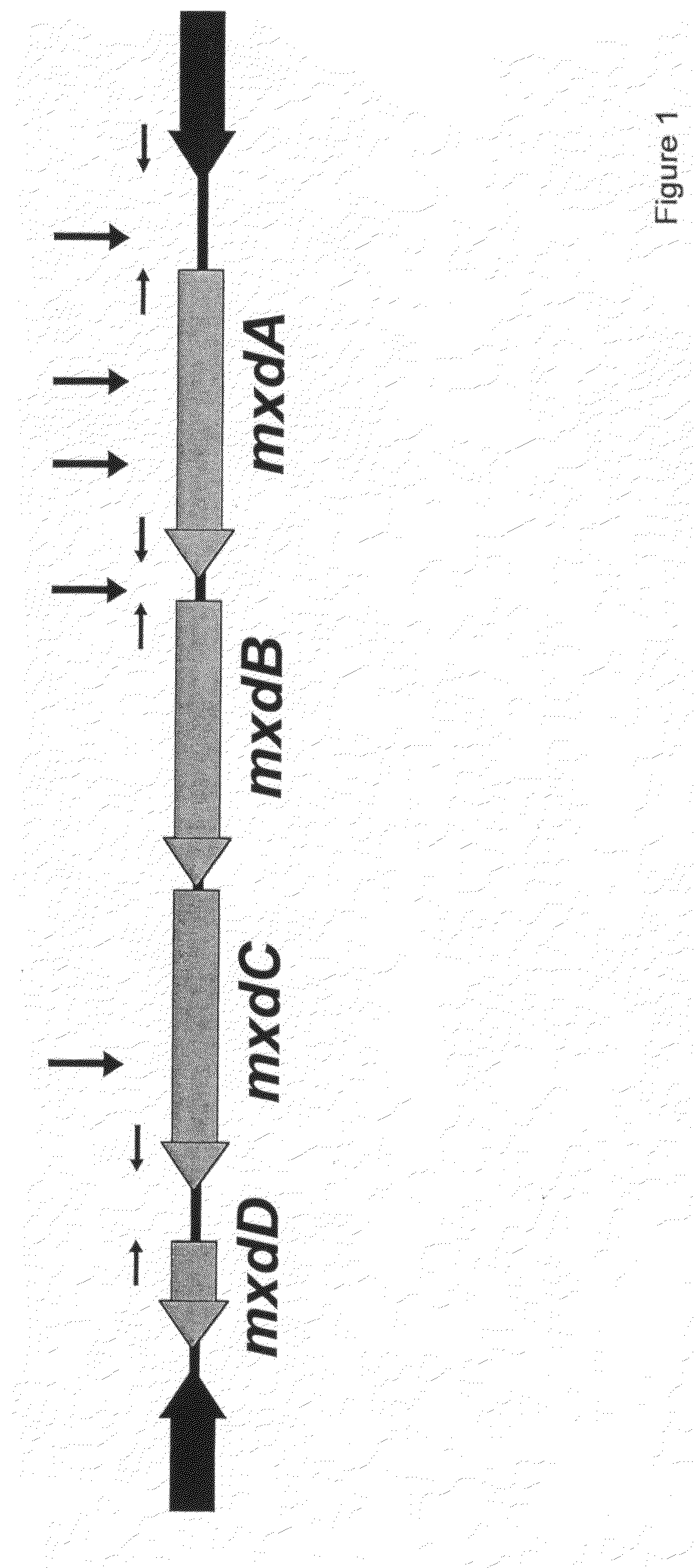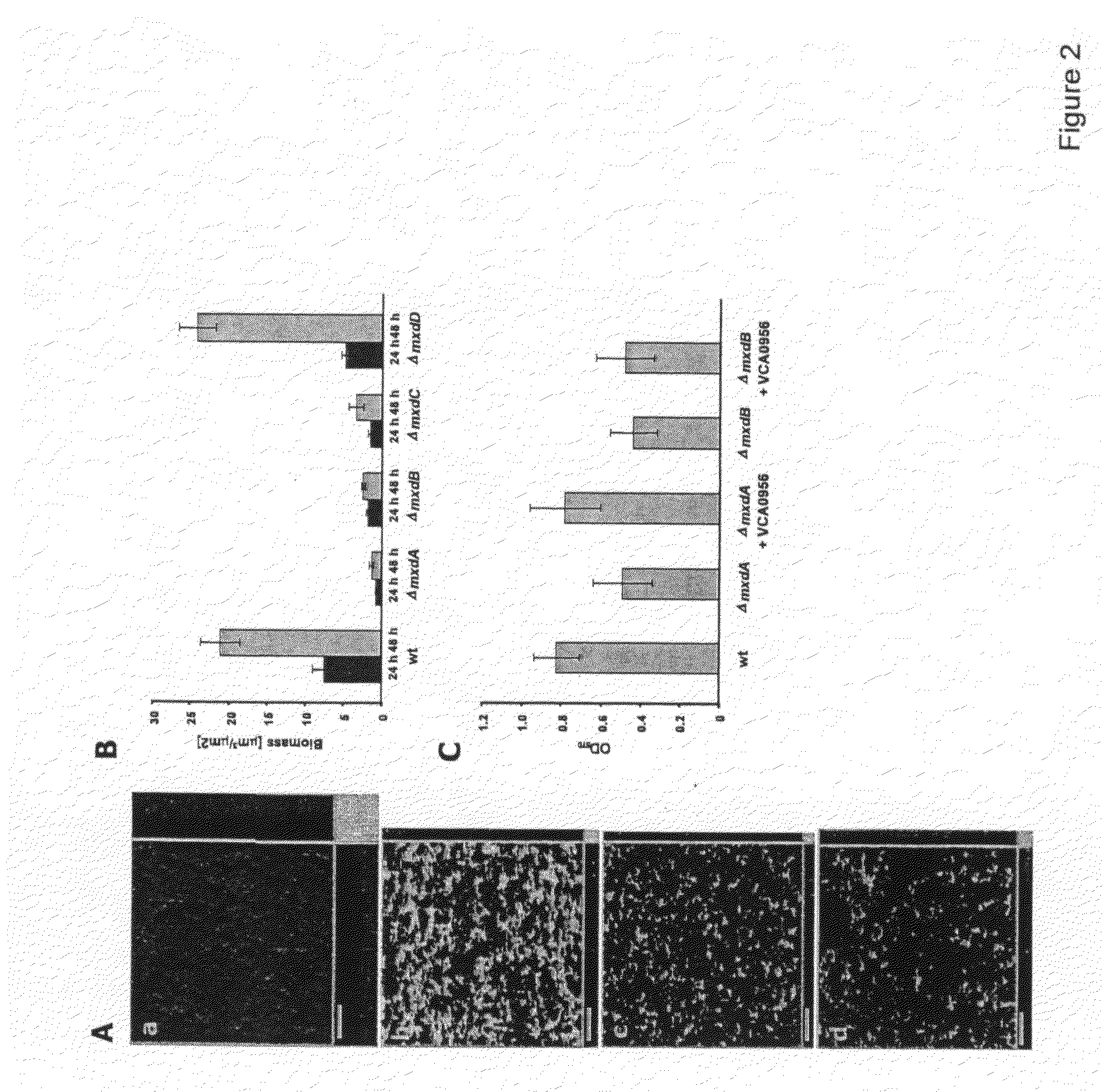Methods for microbial biofilm destruction and interference with microbial cellular physiology
- Summary
- Abstract
- Description
- Claims
- Application Information
AI Technical Summary
Benefits of technology
Problems solved by technology
Method used
Image
Examples
example 2
[0102]Most microbes in nature are assumed to exist as surface-associated communities in biofilms. Biofilms greatly affect their environment, be it the human host, a wastewater treatment plant, or pristine soils and sediments, and significant research has focused on understanding and controlling the resilience and stability of such biofilms. From a microbe's point of view, the decision to either remain associated with or to sever ties to and exit a biofilm confers profound consequences to its lifestyle. Stability and resilience of a three dimensional biofilm is controlled by two diametrically opposed states: attachment and detachment. These mutually exclusive states have in common a change in how cells are associated with the biofilm matrix. The biofilm matrix consists of exopolymeric substances, such as polysaccharides, DNA and proteins, but also of biofilm cells. Despite extensive research over the past decade on biofilms, adhesion of microbial cells to a substratum surface during ...
PUM
 Login to View More
Login to View More Abstract
Description
Claims
Application Information
 Login to View More
Login to View More - R&D
- Intellectual Property
- Life Sciences
- Materials
- Tech Scout
- Unparalleled Data Quality
- Higher Quality Content
- 60% Fewer Hallucinations
Browse by: Latest US Patents, China's latest patents, Technical Efficacy Thesaurus, Application Domain, Technology Topic, Popular Technical Reports.
© 2025 PatSnap. All rights reserved.Legal|Privacy policy|Modern Slavery Act Transparency Statement|Sitemap|About US| Contact US: help@patsnap.com



